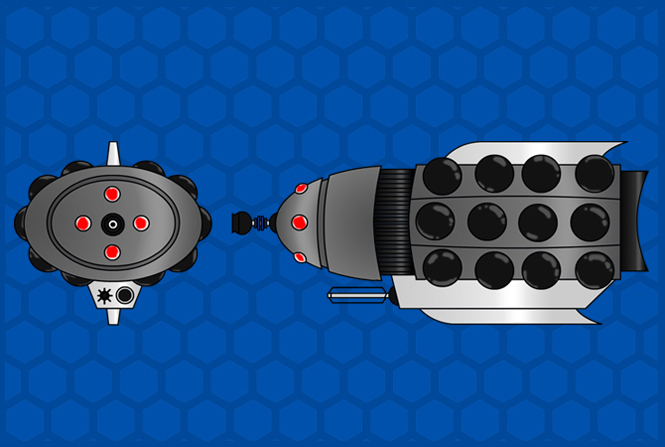of the Daleks
of the Daleks
of the Daleks
of the Daleks
of the Daleks
of the Daleks
Usually seen only on Worlds with a high proportion of water, the Marine Casing was a step away from the usual Dalek design. While all Dalek casings allowed for limited under-water operations, the Daleks discovered that they were often outmatched in such environments. The Marine Casing was developed in order to counter this weakness. The Marine Dalek was a formidable foe in sub-marine environments. The casing was exceptionally nimble in its native environment and proved devastating to the naval fleets of invaded worlds and to creatures that evolved in a sub-marine environment.

Shaped to be reminiscent of torpedoes used by other cultures, the Marine Casing still retained key Dalek design features such as the eye-stalk (which protruded slightly from the end of the casing's Head Dome, but was located in a slot and fitted on a pivot that allowed the occupant a one-hundred and eighty degree field of view). Arm attachments protruded from the midsection line to extend beneath the dome. Because of these common design elements, the Marine Casing was instantly identifiable to its opponents as the product of Dalek technology. This casing was larger than that of a standard Dalek casing. The majority of Marine Daleks were military units, the second arm socket being filled with a harpoon-gun attachment. Scientific units replaced this with a manipulator arm appropriate to their task. The main portion of the casing included a total of Thirty-two (32) sensor globes which fed information about the environment to the central computer. The weapon system was slung underneath the main body allowing more room for internal systems. In addition, the casing featured a dorsal and ventral fin. Luminoscity dischargers lay flat against the casing in a manner reminiscent of the Mark Two and Mark Three Special Weapon Casings.
The internal arrangement of this casing’s workings varied from those of the land-based designs. The casing was effectively at a ninety degree orientation from the standard casings, and the arrangement of systems was altered to allow for this change. The habitation module was located between the head dome and the main body of the casing, with the nutrient tank located next to it. The power plant took up the bulk of the main section of the casing's interior, with the propulsion unit immediately behind this. Power was fed to the weapon systems and arm attachments through the attached housing and this was where the targeting computer was located. The computer in the dome section handled navigation, environmental and non-tactical concerns.
The Marine casing proved to be a manoeuvrable and heavily armed underwater foe. Motive power was supplied through a rear-mounted turbine and a series of directional thrusters, located around the propeller mounting and neck line of the casing. While not the fastest fish in the sea, the Marine Casing could twist and turn far quicker than most enemies it ever encountered.
War of the Daleks. Design is conjectural based on the description in that source.